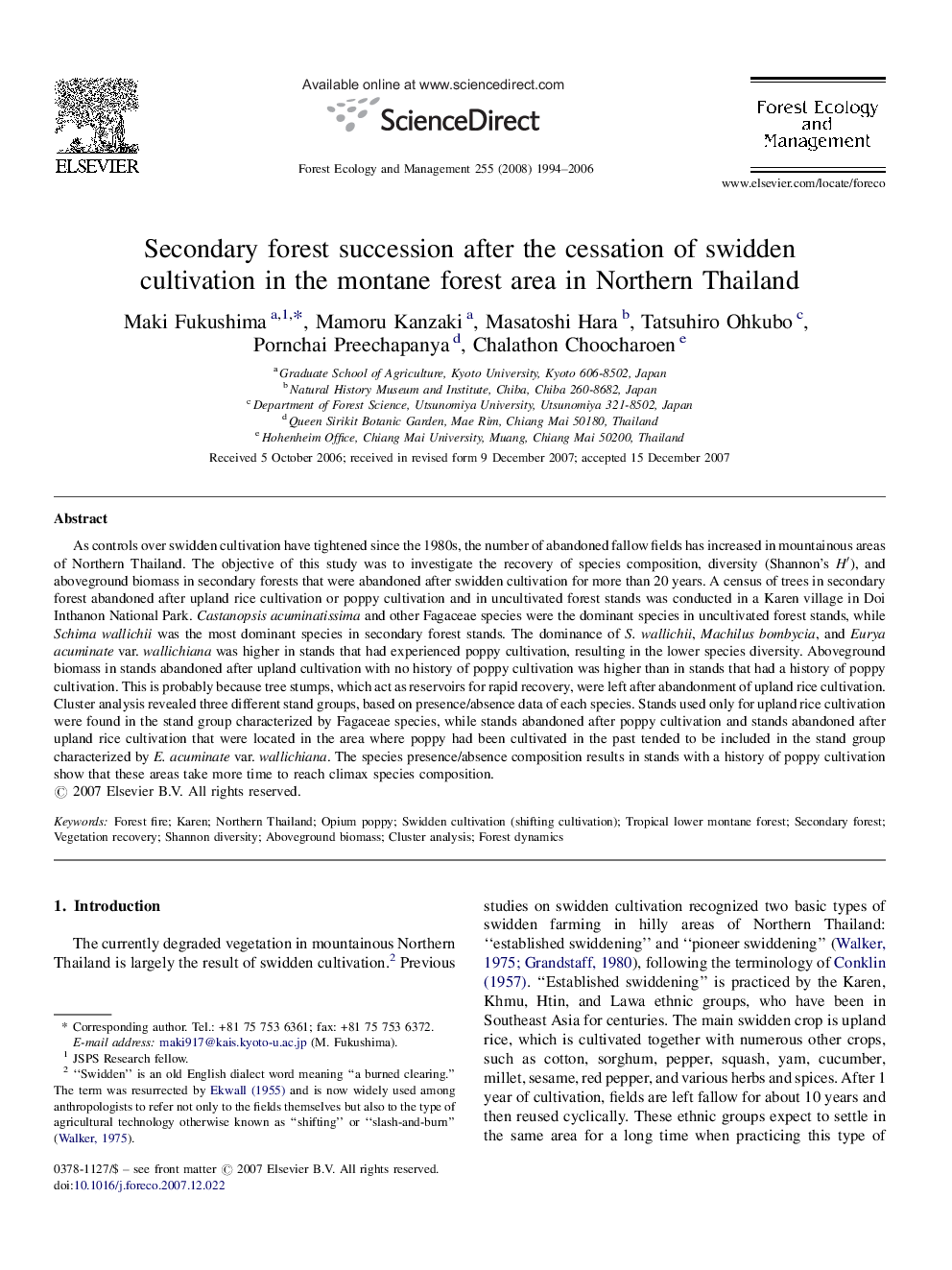| Article ID | Journal | Published Year | Pages | File Type |
|---|---|---|---|---|
| 89532 | Forest Ecology and Management | 2006 | 13 Pages |
As controls over swidden cultivation have tightened since the 1980s, the number of abandoned fallow fields has increased in mountainous areas of Northern Thailand. The objective of this study was to investigate the recovery of species composition, diversity (Shannon's H′), and aboveground biomass in secondary forests that were abandoned after swidden cultivation for more than 20 years. A census of trees in secondary forest abandoned after upland rice cultivation or poppy cultivation and in uncultivated forest stands was conducted in a Karen village in Doi Inthanon National Park. Castanopsis acuminatissima and other Fagaceae species were the dominant species in uncultivated forest stands, while Schima wallichii was the most dominant species in secondary forest stands. The dominance of S. wallichii, Machilus bombycia, and Eurya acuminate var. wallichiana was higher in stands that had experienced poppy cultivation, resulting in the lower species diversity. Aboveground biomass in stands abandoned after upland cultivation with no history of poppy cultivation was higher than in stands that had a history of poppy cultivation. This is probably because tree stumps, which act as reservoirs for rapid recovery, were left after abandonment of upland rice cultivation. Cluster analysis revealed three different stand groups, based on presence/absence data of each species. Stands used only for upland rice cultivation were found in the stand group characterized by Fagaceae species, while stands abandoned after poppy cultivation and stands abandoned after upland rice cultivation that were located in the area where poppy had been cultivated in the past tended to be included in the stand group characterized by E. acuminate var. wallichiana. The species presence/absence composition results in stands with a history of poppy cultivation show that these areas take more time to reach climax species composition.
